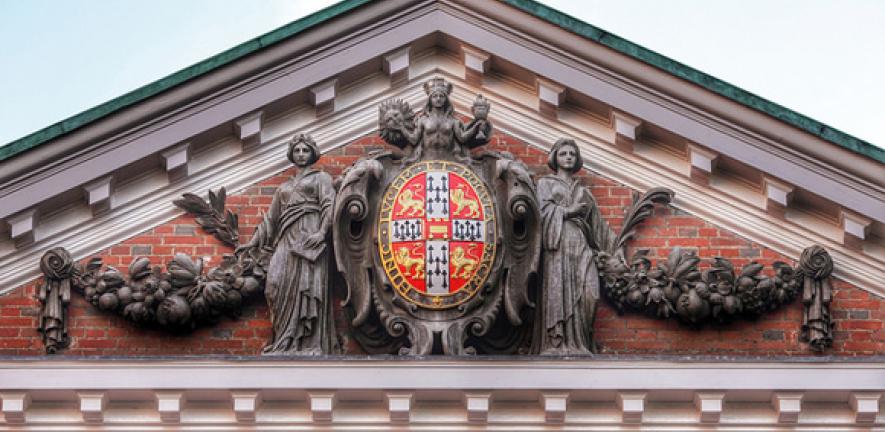
The University was granted its arms in 1573 by Robert Cooke, Clarenceux King of Arms and a graduate of St. John's College. It is for use by the Chancellor, Masters, Fellows and Scholars as a corporate body.
The arms Cooke granted are officially described in heraldic terminology as:
Gules on a Cross Ermine between four Lions passant guardant Or a Bible fesswise Gules clasped and garnished Or the clasps in base.
University's arms official description
Gules on a Cross Ermine between four Lions passant guardant Or a Bible fesswise Gules clasped and garnished Or the clasps in base.
This means:
- it is on a red background
- has a cross of ermine fur between four gold lions walking with one fore-leg raised, and facing the observer
- has the lions facing the left-had edge of the page or item where the arms are displayed
- the centre of the cross has a closed book with its spine horizontal and with clasps and decoration, the clasps pointing downward
We have no right to change our coat of arms without Royal Authority.
University motto
Our motto is not an official part of the original grant. It can be used under or around the coat of arms.
Latin: Hinc lucem et pocula sacra
English: Literal: From here, light and sacred draughts
Non-literal: From this place, we gain enlightenment and precious knowledge.
The University logo
The University’s Coat of Arms, and by association our logo, represents more than 800 years of excellence. It is an international symbol of the University’s reputation for high quality and standards.
Our logo consists of the coat of arms and the University name.
